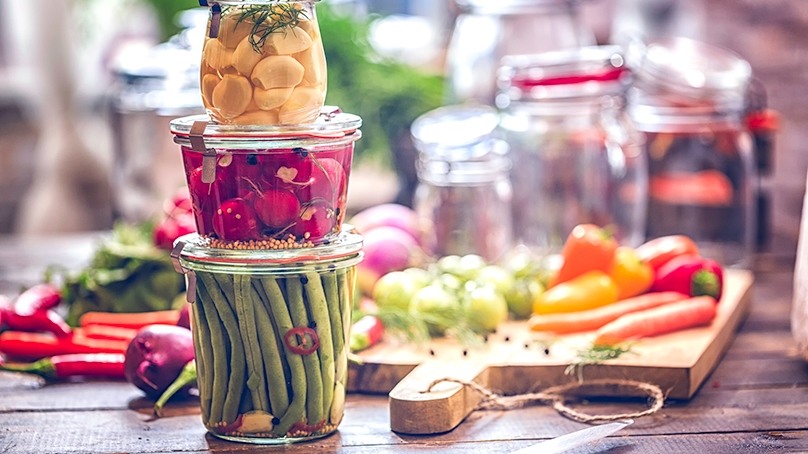Canning 101: Tips and Tricks for Easy Canning, Pickling, and Preserving
June 28, 2018 | Food Lion


Maybe you've planted, tended, and harvested your garden crop of beans, tomatoes, and strawberries, or perhaps you know you're going to miss that fresh produce in the grocery store once autumn arrives. To help you enjoy the tastes of summer throughout the winter, use these tips when canning, pickling, and preserving fresh fruits and vegetables.
1. Prepare ingredients ahead of time.
Keep calm and produce a better product by getting your ingredients ready before you start the canning process. With jam, for instance, leaving it boiling for too long while you grate the lemon zest destroys the pectin so the jam won't set — so you want to make sure you have everything ready ahead of time. You can also prepare some ingredients the day before to make canning day less arduous.
2. Leave the peel on.
Canning tomatoes, pears, and plums without peeling them preserves the nutrients, prevents waste, and saves time, explains experienced canner Kathie Lapcevic of Homespun Seasonal Living. If you don't prefer the texture of the peel, then by all means, remove it. But if you don't mind it, there's no reason not to keep it on. That being said, some fruits and veggies should definitely be peeled:
· Peaches – canning peaches with a fuzzy peel is generally not as appetizing
· Citrus fruits – the peel on oranges, limes, lemons, and so on is bitter
· Beets – the peel is just too tough
3. Bigger batches save time and effort.
Canning tomatoes and fruits is especially hot work when you want the skin removed, since you have to immerse them in boiling water for 30-60 seconds to loosen the skin. Andrea Weigl of the "Charlotte Observer" suggests canning a lot at once to make the day spent in a hot kitchen even more worthwhile.
4. Use fresh fruits and vegetables.
Produce that sits for a few days on the counter or even in the fridge loses some of its vitamins. Shaina of Simple Bites suggests it's best to can your garden fruits and veggies right after you harvest them, in order to have the highest nutritional content. It's perfectly fine to freeze produce that will be cooked before canning until you're ready to can if needed. This preserves the nutrients and taste.
5. Sterilize canning jars…or not.
If the cooking time of your preserves is more than 10 minutes, it's not necessary to sterilize your canning jars — just make sure they are very clean. For any other canning, sterilize and keep jars warm by:
· Placing in dishwasher on sanitize cycle
· Boiling jars for 10 minutes in a large pot
· Using a water bath canner
6. Be safe with pressure canning.
Canning jars should always be sterilized before pressure canning. The main goal in preserving your fresh fruits and vegetables — besides having delicious produce to eat through the winter — is to prevent bacteria from growing so the preserves are free of dangerous botulism. Some foods cannot be pressure canned, such as dairy, grains, and pureed vegetables. Foods with a ph of 4.6 or above can be. Investing in a small ph tester or litmus paper is very helpful.
7. Don't reinvent the wheel.
Many seasoned canners have tested the waters before you, and offer great tips and tricks for saving time and effort, as well as producing delicious results. Search the internet to find the zestiest salsa recipe for canning, tips on making sweet applesauce, and tricks for turning cucumbers into crunchy pickles or a spicy salad.






Create Your Display Name